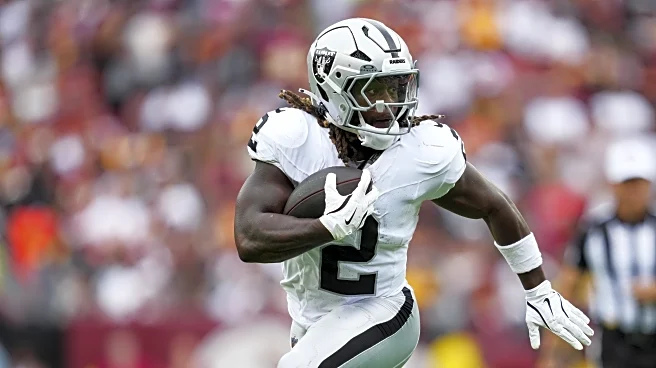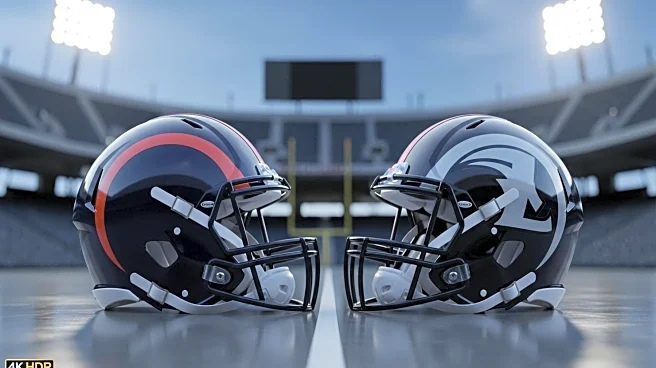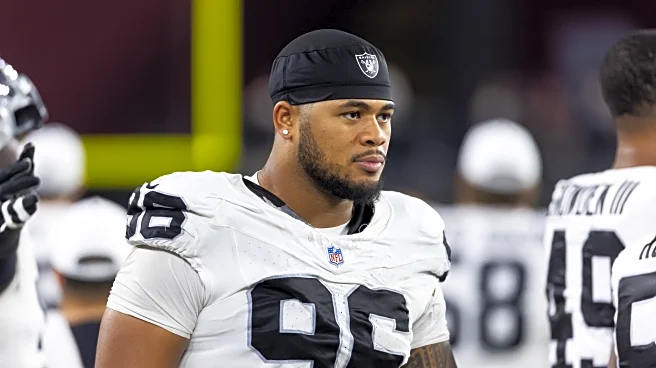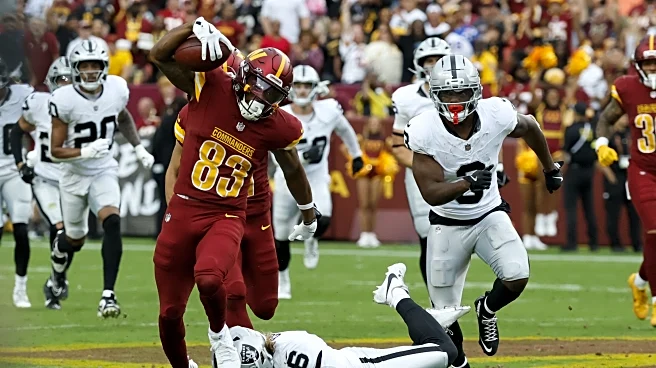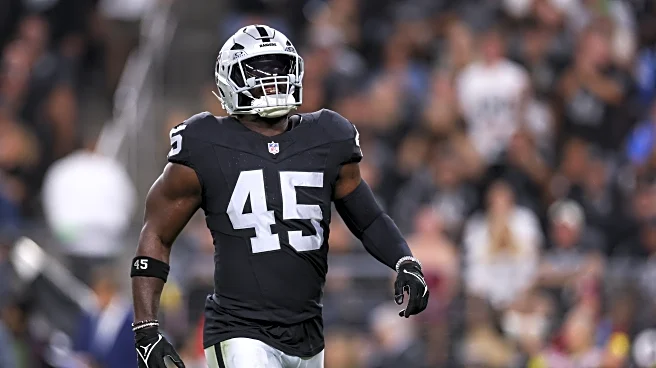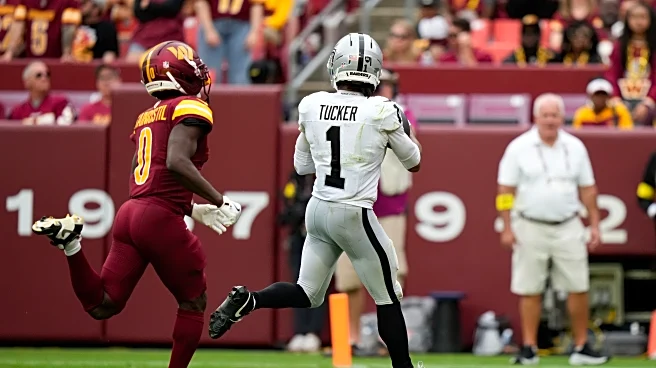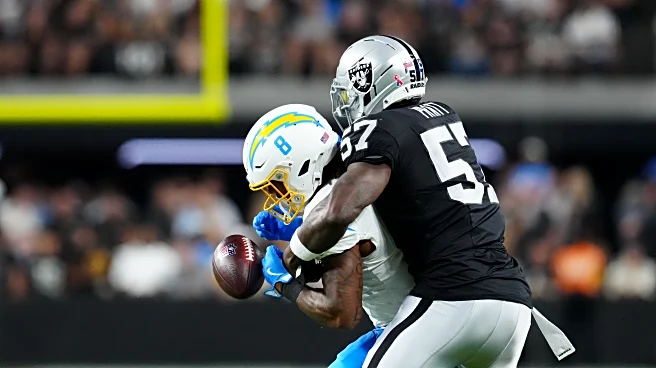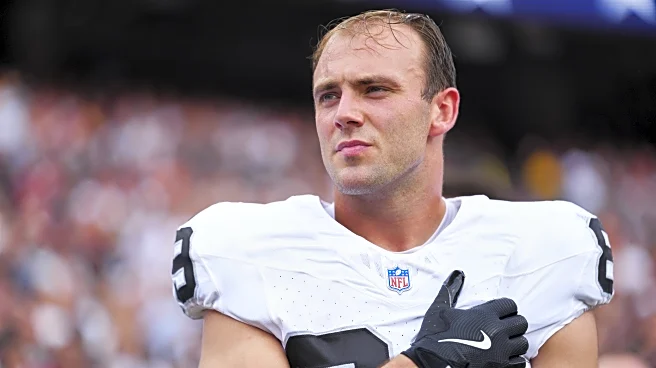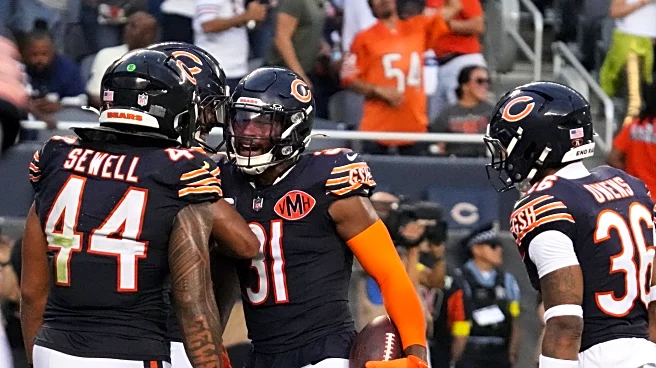While the Las Vegas Raiders showed plenty of problems during the first two weeks of the season, defending the run wasn’t one of the team’s issues. The Raiders gave up just 141 yards on the ground and 3.2
yards per attempt against the New England Patriots and Los Angeles Chargers. However, Week 3 against the Washington Commanders was a different story.
Las Vegas surrendered more than double the amount of rushing yards it allowed in the first two games combined, yielding 201 yards and 7.6 yards per attempt to Washington. As one might expect, that also led to the team’s lowest run defense grade from Pro Football Focus in the early stages of the season, posting an ugly 45.3 mark.
How did this happen? Who is to blame? Let’s take a look at a few examples and find out.
Here, the Commanders run a simple zone run. Linebacker Devin White initially does a good job of filling the gap, stepping into the playside D-gap, which gets the running back to cut up the field. That’s exactly what the defense wants since the other linebacker, Germaine Pratt, is in the backside A-gap and ready to make the play.
However, the playside defensive linemen, Tyree Wilson and Adam Butler, get sealed inside, and White gets set up by the running back. When the back starts to push downhill, White doesn’t stay disciplined and in his gap. Instead, he moves back toward the middle of the field and leaves his assignment.
That creates an easy block for No. 73 (the offensive lineman lined up at tight end), as 73 gets just enough of White to give the back an outside rushing lane. Also, Jamal Adams doesn’t set the edge against the other tight end.
All of that results in a 14-yard gain.
One common theme from Sunday is that the Raiders weren’t ready for what the Commanders were throwing at them.
In the play above, Washington comes out in an unbalanced line, which creates some confusion for Las Vegas’ front. Notice how Malcolm Koonce is pointing for the defensive tackles to shift over pre-snap. Also, the defense only has six defenders in the box despite the offense being in a wildcat formation with two extra blockers in the backfield, giving the Commanders a significant numbers advantage to run the football: eight against six.
Typically, the way the defense wants to line up against an unbalanced offensive line is to treat the right guard (in this instance) like the center. That means Butler (the 3-technique) lines up outside shade on the right tackle and Fotu (the nose tackle) is inside of the right guard. Then, the linebackers, Pratt and White, can slide toward the tight end/extra offensive lineman to account for the strong side gaps and the two potential lead blockers in the backfield, while Chinn comes into the box to protect the weak side of the formation.
To make matters worse, the Raiders’ issues go beyond just lining up incorrectly here. Butler gets penetration but gets way too far up the field, creating a rushing lane behind him. Meanwhile, Fotu gets blocked into the second level of the defense, so the defensive line has no presence in the middle with both tackles out of position. Also, Crosby gets widened by the combo block from the two offensive linemen while trying to set the edge.
Despite all of that, Pratt is in a position to make the tackle on Deebo Samuel, the wildcat quarterback. However, just like the previous play, Samuel sets up both linebackers, which gets White out of position and creates an outside rushing lane.
This is another example of the Raiders not being ready for what the Commanders were throwing at them.
Washington comes out in another unbalanced offensive line, the differences are that they have a tight end lined up at the left tackle spot (the normal left tackle is the right tight end) and the quarterback stays in the backfield this time. The offensive formation creates confusion for the defense again as they struggle to get lined up and White is making calls while the ball is snapped.
Because the defense isn’t on the same page and having issues getting set, they end up with two defenders in the A-gap pre-snap: Butler at nose tackle and Pratt at MIKE linebacker. That becomes significant post-snap because the edge defender, Koonce, steps down to take the running back on the read option and Pratt can’t scrape over the top of the formation to account for the quarterback. As a result, the linebacker gets blocked by the center and no defender is in a position to make the tackle on Marcus Mariota.
Making matters worse, cornerback Kyu Blu Kelly turns initially like he’s dropping coverage to cover the tight end, who is arc releasing off the line of scrimmage to block Chinn. So, Kelly isn’t in a good position to take on the lead blocker out of the backfield, and Mariota goes untouched for a 14-yard gain.
Here, Washington comes out in 13 personnel (just with an extra offensive lineman as one of the tight ends) and in a jumbo formation.
Part of the problem is that Las Vegas is in an under front where the 3-technique defensive tackle is on the weakside, leaving the strongside B-gap open. An over front where Thomas Booker IV (No. 99, the nose tackle here) is lined up on the guard’s outside shoulder as a 3-technique and Jonah Laulu (No. 96, the other defensive tackle) is shaded the on center would be a better alignment against this formation.
But the bigger issues come post-snap. Booker gets pushed to the other side of the center by a combo block from the center and right guard, while Koonce essentially has to take on a triple team from the right tackle and both tight ends (one of whom is an offensive lineman). Making matters worse, both White and Roberts crash into the strongside B-gap.
That makes the right tackle’s block easy as he comes off Konce to kick Roberts inside, and the two tight ends push Koonce into White. As a result, cornerback Eric Stokes is left to fill the rushing lane and misses the tackle in the hole, giving up a nine-yard gain. Ideally, one of those two linebackers would be there to make that play.
Long story short, this is a case of defenders not being in the right spots both pre- and post-snap.
We’ll see the same play call from the Commanders here, and the Raiders are actually in a good front pre-snap this time where every gap is accounted for. However, Las Vegas still ends up with two defenders in one spot and leaves an open rushing lane post-snap.
White and Roberts crash downhill on a designed blitz again, where White attackes the strongside C-gap and Roberts crosses the center to get into the strongside A-gap. But for some reason, Fotu (the nose tackle) slants from the weakside A-gap to the strongside A-gap, which Roberts is already accounting for. So, the running back just hits the hole that has no defender in it and gets an 11-yard gain right up the gut.
Finally, the Raiders other big issue on Sunday was tackling. According to PFF, the defense missed 11 total tackles and 10 came against the run. The best example was one of the most explosive plays of the game: Jeremy McNichols’ 60-yard touchdown run.
Washington runs another read option, this time handing the ball to the running back on the split zone action in the backfield. For the most part, Las Vegas defends this well as Chinn initially has McNichols ‘dead to rights’ with a chance to make the tackle for a short gain. However, Roberts comes to help and ends up knocking Chinn off the tackle while failing to bring the running back down himself.
Then, White and Crosby can’t finish the job as McNichols is off to the races and doesn’t stop until he reaches the end zone.
So, who is to blame? Well, there are plenty of people at fault since the defense as a whole was a major let down against the run on Sunday. But seeing how often players looked confused, unprepared and were out of position, the finger pointing should start with the coaching staff, especially Pete Carroll and Patrick Graham.

